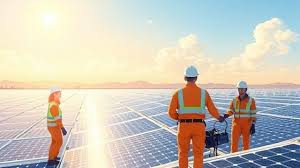Column
Cost Of Governance And In-Coming Ministers, Others
The Federal Government recently announced its resolve to scale down the jumbo pay, enjoyed by the outgone senators and members of the House of Representatives in the past four years. The presidency’s decision is premised on the fact that such jumbo salary and allowances are outrageous and have become sources of distraction and acrimonies in the parliament.
To demonstrate its seriousness over the issue, the presidency has already directed that the allowances of each member of the House of Representatives be scaled down from N42 million to N30 million per quarter, while that of a senator will now go down from N46 million to N33 million per quarter.
However, the presidency is yet to say how it intends to slash the jumbo pay and allowances which the outgone ministers, their aides and cronies were enjoying in the past four years. This is giving serious concern to well-meaning Nigerians in view of the persistent calls for a sharp reduction in government’s overhead expenditure by at least 50%, as well as a downward review of political office holders’ monthly pay, given the economic realities of our time.
Not too long ago, the chairman of the defunct Technical Committee on Niger Delta, and a frontline human rights activist, Mr Ledum Mitee threw his weight behind those insisting on a review of the remuneration of political office holders and our legislators. Delivering a paper titled, ‘Believers without Belief and the 2011 Elections, at a public function in Port Harcourt, Mr. Mitee who is also the President of the Movement for the Survival of the Ogoni People (MOSOP), advocated a serious reduction in government’s overhead cost by 50 per cent, and the downward review of the remuneration of the country’s political office holders to reflect the economic realities of the nation.
The move, he said, would in no mean way, stem the rising tide of desperation by politicians who engage in rigging, thuggery, murder, violence and other undemocratic acts to acquire power. While expressing sadness over the cooling of the common heritage and wealth by politicians, Mr Mitee said “no efforts should be spared in making the lucre of office less attractive”.
One can recall vividly that Sanusi Lamido Sanusi, Governor, Central Bank or Nigeria (CBN), literally dropped a bombshell in the country late last year. Not mincing his words, he announced to the chagrin of many that members of the National Assembly were consuming 1/4 of the nation’s annual expenditure.
Specifically, the CBN boss lamented that the worrisome expenditure was tied to the senators and House of Representative members’ salaries and frivolous allowances. As it were, Sanusi’s outburst threw up dust across the country with condemnations from economists and other well-meaning Nigerians.
Expectedly, the CBN governor was summoned to the National Assembly to explain how he came to the conclusion that NASS members were consuming up to a quarter of the nation’s annual expenditure.
Fearlessly, Sanusi stoutly defended his public statement, which attracted accolade from economic analysts and other Nigerians across the country. Well, our NASS members were not pleased with the Sanusi’s defence. All that is now history.
But the senators and members of the House of Representatives later had closed door meetings to review the matter so as to douse the palpable tension generated in the country. Perhaps, against the backdrop of public outrage of jumbo salaries and allowances of NASS members, Senate President, David Mark, early this year, announced that the National Assembly was now ready to ensure that its budgetary process did not go beyond “the formalities of annual rituals”.
His words: “We must give meaning and soul to our budgets to truly be the succour to the people’s economic stress and depression, to give hope and to be a soothing source of their faith in government. We owe this to the people we all represent”.
Senate President, however, said that a related issue was the “unacceptable disproportionate ratio of recurrent and overhead expenditure to capital expenditure”, as presented by the financial authorities. Nigerians are indeed, glad that the National Assembly is coming to terms with the CBN boss.
Be that as it may, it is sad that all about the anti-graft gospel being preached by the present administration now appears to be a farce, given the avarice with which some political appointees and lawmakers want to rise to power through overt and covert graft at the federal level.
Or, how would one explain a situation whereby the Federal Government is reportedly spending at least N 1.3 trillion annually on political aides and their cronies, thus undermining the nation’s resources. This is rather unfortunate, to say the least.
In a lecture he delivered at the Annual General Meeting of the Manufacturers Association of Nigeria (MAN), Mr. Bolaji Ogunseye, the former Executive Director of the Rivers State Sustainable Development Agency (RSSDA), lamented that such expenditure include those as aides to top government functionaries and their cronies.
Such frivolous spending by the Federal Government, he said, “do not contribute to any form of economic advance”, and noted that the situation also extends to government at all levels, hence Nigeria is now operating a “collect and spend economy”, with little or no consideration for the manufacturing industry, which is the mainstay of any development-minded country.
Not done with what he identified as ‘frivolous spending’ by the federal government, the ex-RSSDA boss explained that because of the seeming innate tendency to only collect from government, giving little in terms of being productive in manufacturing of products, most Nigerians are poor.
Listing the solution to the situation in order to achieve the vision 2020, he said the solution is “doing the right thing, and doing it at the right time”, regretting that Nigeria now has what he christened, “economy of affection in which those in authority spend money based on affection instead of on viable economic development ventures such as education, health, among others.
Sadly, the current frivolous spending at the federal level, may force one to’ recall a controversial work on “natural tendencies” of organisations, published almost a century ago. Indeed, in 1911, a young German sociologist, Robert Michels, produced a scholarly work on political organisations with the subtitle – A sociological study of the Oligachical Tendencies of Modern Democracy.
Michels, at the end of his research intoned:”1t is organisation which gives birth to the domination of the elected over the electors, of the mandataries over the mandators, of the delegates over the delegators.
He also posits that the government of any organisation is always constituted by the leadership, which of course is always an oligarchy. Therefore, what exists in any organisation, including the federal government, may not be democratic values, but an oligarchy, defined as a “form of government in which power is vested in few persons or in dominant class or clique”.
Having made these caveat and allowances, it is necessary to allow a confrontation between the NASS members, political appointees and Robert Michels, who contends that the elected or government in any form must be rendering services to the people (the electors, mandators, delegators, etc). Therefore, the question now is why would our political appointees always want to treat the electorate as underdogs, while aggrandising the scarce resources of the country.
That said, the reported frivolous spending by political office holders at the federal level is being condemned by civil society organisations, industrialists and some renowned economists. The condemnation borders principally on the fact that the nation’s money should be spent on infrastructural facilities and not on politicians, political aides and their cronies.
It is instructive to remind our political office holders, especially the incomng ministers and other poltiical appointees that they are being appointed to serve the masses. They should therefore not see themselves as an oligarchy or a clique, thus shirking their constitutional schedules, under selfish motives.
Column
Renewable Energy Faces Looming Workforce Crisis

Column
Why Oil Prices Could See Significant Upside Shift

Column
Nuclear Stocks Soar on Stargate AI Infrastructure Announcement
-

 Business3 days ago
Business3 days agoPETAN, Others Unveil ALCO, Get NCDMB’s Support … Mull Synergy With APPO, AU
-

 Sports3 days ago
Sports3 days agoNYG:154 Nasarawa Contingent Storms Kwara For Zonal Eliminations
-

 Business3 days ago
Business3 days agoAON Lifts Ban On Freed Ibom Air Passenger
-

 Sports3 days ago
Sports3 days agoNigeria delegation Visits London over 2030 Commonwealth bid
-

 News3 days ago
News3 days agoNigeria’s Debt To W’Bank IDA Hits $19.2bn -Report
-

 Sports3 days ago
Sports3 days agoD’Tigers flawless finish against Lions in AfroBasket
-

 News3 days ago
News3 days agoChurch Renders Free Medical Outreach, Others To Host Communities
-

 Maritime3 days ago
Maritime3 days agoNCC Announces Telecoms Facilities Protection Measures

